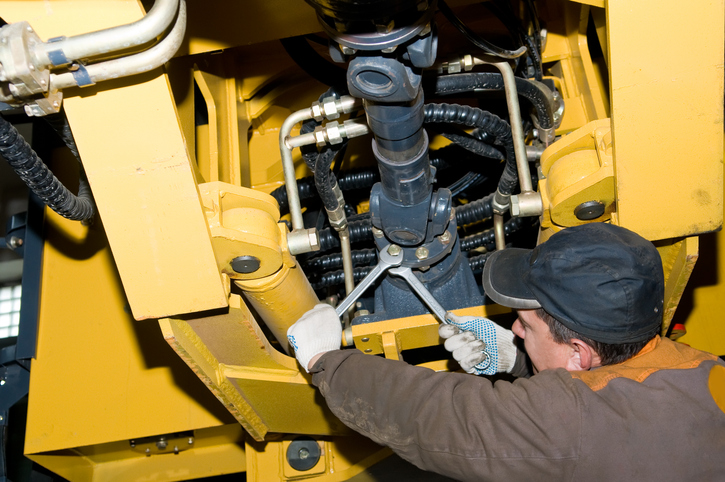Smart Fabrication Choices Lead to Stronger, More Reliable Equipment
When you’re building equipment tough enough to survive the job site, there’s no room for error. One weak weld, delayed component, or out-of-spec part can cause reputational damage. That’s why understanding the fabrication process is so critical. From the first design sketch to the final assembly, every step directly impacts costs, quality, and delivery.
In this guide, we’ll walk you through the full construction equipment fabrication process. We’ll break down each stage and spotlight the common challenges that can derail even the best-laid plans. Let’s get started.
Understanding the Construction Equipment Fabrication Process
Design and Engineering
The fabrication process starts with a solid design. In this phase, engineers and manufacturers will work together to ensure the equipment is functional and manufacturable. They may review tolerances, work to simplify complex assemblies, and make design choices that reduce production costs.
Material Selection
Along with the design, engineers and manufacturers will decide which material is best for that application. For example, different grades of steel are selected based on the specific requirements of the equipment. The design team will look at durability, wear resistance, and other factors that might affect the component.
Component Fabrication
Once the materials have been sourced, it’s time to fabricate the individual parts. A quality manufacturer will use a range of specialized processes designed to ensure precision and quality. These capabilities include:
- Laser cutting: Utilizing high-powered laser technology to cut complex shapes and patterns with exceptional accuracy and clean edges, suitable for both thin and thick materials.
- Press brake forming: Bending metal sheets into precise angles and shapes using computer-controlled press brakes, ensuring consistent and repeatable results.
- Robotic welding: Automated welding systems that deliver consistent weld quality and strong joints while increasing production speed and reducing human error.
- CNC machining: Computer numerical control machines that carve and shape parts with tight tolerances, enabling the creation of complex geometries and smooth finishes.
Regardless of the process used, maintaining tight tolerances throughout fabrication is essential, especially for components that need to fit together precisely in the final assembly. This focus on accuracy minimizes costly rework, shortens lead times, and ensures the long-term reliability and performance of the finished product.
Surface Treatment and Finishing
Construction equipment is often subject to harsh environments. That’s why proper surface treatment is so important. To protect against abrasion, corrosion, and weathering, parts undergo a surface preparation and finishing process. This begins with a multi-stage wash system that removes oils, debris, and contaminants to ensure optimal adhesion.
For added protection, components receive a primer that creates a durable barrier against corrosion. This is especially helpful in high-moisture or salt-exposed environments. From there, the parts will go through a two-pass powder coating system. A zinc-rich base is added for adhesion and protection, followed by a topcoat that enhances durability and provides a smooth, uniform finish. These coating systems extend the service life of equipment and meet rigorous specifications required by some of the most recognized OEMs in the construction industry.
Assembly
In the final phase, all fabricated components are assembled into a complete piece of equipment. This step requires close attention to detail to make sure all parts fit correctly and function smoothly. Thorough testing and inspection are performed to confirm that the finished product meets design specifications and is ready for use.
Preparing for Common Challenges in Construction Equipment Fabrication
Ensuring Quality and Durability
As mentioned above, construction equipment must perform in demanding environments. There’s no room for weak welds, bad cuts, or poor finishes. If your company were to put out poor quality products, it could result in premature failure, warranty claims, and reputational damage. That’s why it’s so important to work with an experienced manufacturer who can mitigate these risks.
Managing Lead Times and On-Time Delivery
Missed delivery results in delayed builds and unhappy customers. Coordination issues with multiple suppliers create risk for OEM schedules. Working with a vertically integrated manufacturer can help. They can keep all production in-house, reducing the risk of delays.
Achieving Cost-Effective Solutions
Buyers are under pressure to hit the target cost per unit. However, hidden costs from rework, late deliveries, or part mismatch can erode margin quickly. Working with a partner who offers cost predictability without cutting corners can help.
Webco Helps You Avoid Costly Mistakes
Need an experienced partner for your construction equipment fabrication needs? Trust Webco. For over 40 years, we’ve been a go-to partner for businesses with the most challenging projects. When you work with us, you can expect high-quality materials, precision equipment, rigorous quality control systems, scalable solutions, and fast lead times. Additionally, we’re an ISO 9001:2015 and AWS-certified shop, allowing us to meet stringent industry standards.
Today, we’re one of the most trusted names in the custom metal fabrication industry. Our three robust facilities, 250 skilled employee-owners, and commitment to quality ensure you get exactly what you’re looking for. Whether you need high-volume production or specialized fabrication, we deliver reliable solutions. Contact us today to learn how we can help you.
